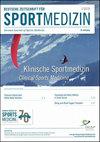Repeated sprint training in hypoxia – an innovative method
Q3 Health Professions
引用次数: 35
Abstract
The year 2018 marked the 50th anniversary of the Mexico Olympic games, which represents the starting point of scientific research on hypoxic training. Since the original “Live High – Train High”, many altitude/hypoxic training methods have been developed. The aim of the present review is to present the most recent method called “Repeated Sprint training in Hypoxia” (RSH). RSH is of unprecedented interest in the altitude training area with 25 studies published in the 5-year period following the pioneer article in 2013, and with only two studies that did not report any beneficial effects. Potential mechanisms include transcriptional factors involved in oxygen-signaling and oxygen-carrying capacity and mitochondrial metabolism enzymes, improved behavior of fasttwitch fibers notably via compensatory vasodilatation, improved vascular relaxation and greater microvascular oxygen delivery as well as faster rate of phosphocreatine resynthesis. In general, RSH leads to superior repeated-sprint ability (i.e., faster mean sprint times or higher power outputs associated witha better resistance to fatigue during a repeated-sprint test) in normoxic conditions. RSH where hypoxia is induced by voluntary hypoventilation at low lung volume (named VHL) may also improve repeated-sprint performance more than in normoxia. Practically, RSH benefits have been demonstrated for a large range of team- (rugby, football, LaCrosse, Australian Football, field hockey), endurance (cycling, track and field, cross-country ski), racket (tennis) or combat (Jiu-Jitsu) sports.低氧重复冲刺训练——创新方法
2018年是墨西哥奥运会举办50周年,是低氧训练科学研究的起点。自最初的“高生活高训练”以来,许多高海拔/低氧训练方法被开发出来。本综述的目的是介绍一种最新的方法,称为“缺氧中重复冲刺训练”(RSH)。RSH在高原训练领域引起了前所未有的兴趣,在2013年的先驱文章之后的5年时间里发表了25项研究,只有两项研究没有报告任何有益的效果。潜在的机制包括参与氧信号和携氧能力的转录因子和线粒体代谢酶,特别是通过代偿性血管扩张改善快肌纤维的行为,改善血管松弛和微血管氧气输送以及更快的磷酸肌酸再合成速率。一般来说,在正常条件下,RSH导致卓越的重复冲刺能力(即,更快的平均冲刺时间或更高的功率输出,在重复冲刺测试中具有更好的抗疲劳能力)。低肺容量(VHL)下自发性低通气引起的低氧RSH也可能比正常缺氧时更能改善重复冲刺的表现。实际上,RSH的益处已被证明适用于各种团队运动(橄榄球、足球、长曲棍球、澳大利亚足球、曲棍球)、耐力运动(自行车、田径、越野滑雪)、球拍(网球)或格斗运动(柔术)。
本文章由计算机程序翻译,如有差异,请以英文原文为准。
求助全文
约1分钟内获得全文
求助全文
来源期刊

Deutsche Zeitschrift fur Sportmedizin
Medicine-Orthopedics and Sports Medicine
CiteScore
2.00
自引率
0.00%
发文量
30
审稿时长
>12 weeks
期刊介绍:
The Deutsche Zeitschrift fuer Sportmedizin - German Journal of Sports Medicine has been
founded in 1951 and is dedicated to the biomedical science and clinical practice of Sports
Medicine and its border fields which investigate the influence of exercise, physical training
and sports as well as lack of exercise to healthy and sick people of all age-groups, related to
prevention, diagnosis, therapy, rehabilitation and physical training.
Manuscripts which deal with actual scientific and medical findings, new hypotheses, actual
controversies and problems in real life will be published. Possible Topics are physiology
and pathophysiology of exercise, medical and biological findings, the medical therapy of
exercise-related medical problems, epidemiology of sedentary lifestyle and related
disorders, therapy of sports injuries - especially the conservative postoperative treatment
of injuries -, medical training and rehabilitation medicine, as well as special social,
cultural, psychological and special science-related aspects of the entire scientific field.
 求助内容:
求助内容: 应助结果提醒方式:
应助结果提醒方式:


